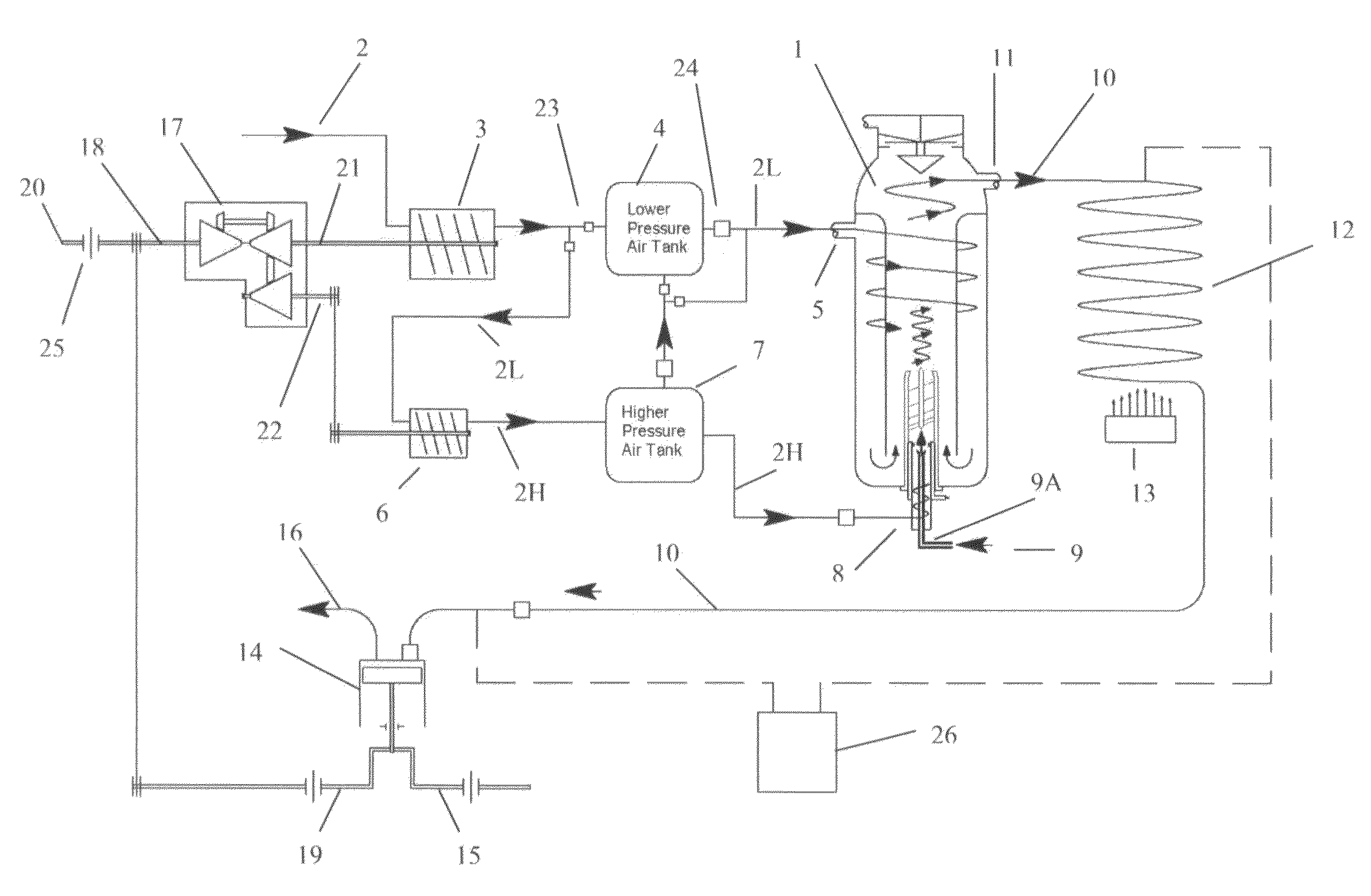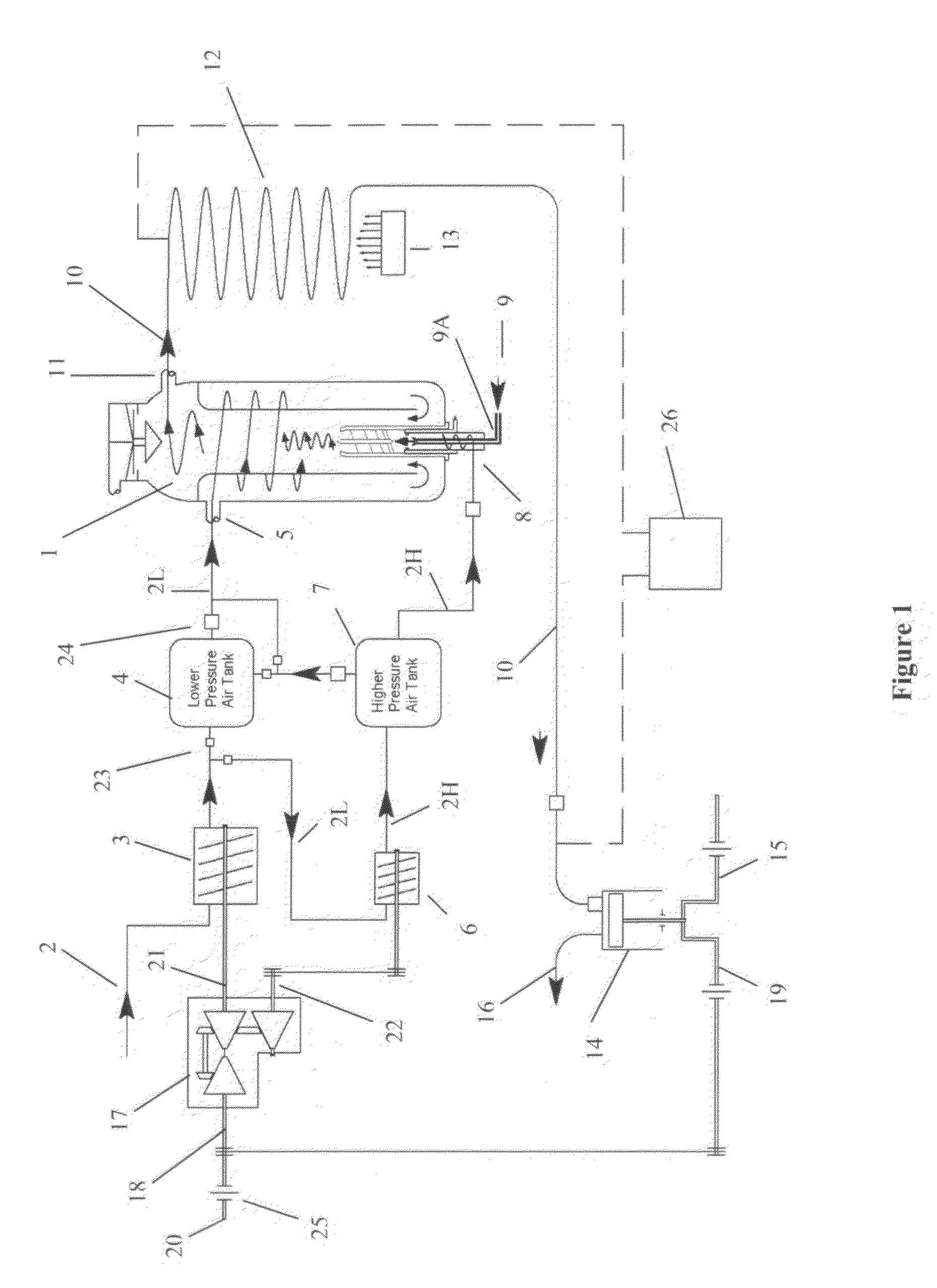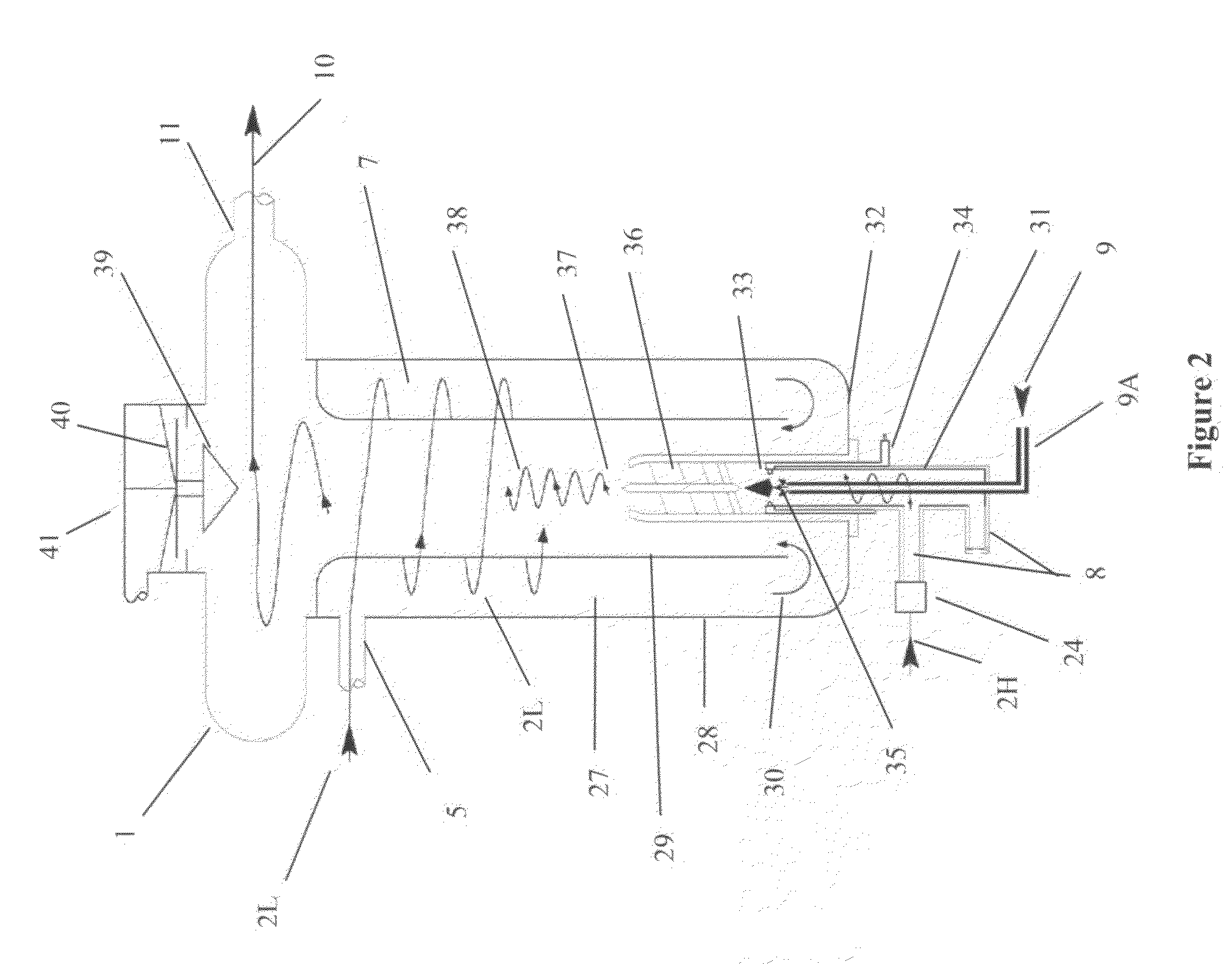[0021]The present invention is directed to an improved external
combustor and device for providing pressurized gas to conduct work, such as, but not limited to, driving a low-pressure-gradient positive displacement motor to produce rotational
power output. For example, the external
combustor described can provide heated and pressurized gas to any pressure-driven motor such as a rotary gear, rotary vane,
turbine, or
piston driven motor. Additionally, the external
combustor and the low pressure-gradient positive displacement motor can be combined to produce a device for
energy storage and regenerative braking, which may at least partially overcome the deficiencies in the prior art or provide the
consumer with a useful or commercial choice.
[0022]The combustion takes place in a separate pressurized combustion vessel that is supplied with a liquid,
solid, gas or combination thereof
organic fuel and two separate streams of
compressed air, one from a lower pressure
air compressor and one from a higher pressure
air compressor. The combustion gases produced by igniting the fuel with the higher pressure air
stream are accelerated and blended with the lower pressure air stream in a manner to produce a mixture of a high temperature pressurized working gas. The design includes features of
regenerative cooling of the combustion vessel, improved combustion characteristics, and higher efficiency. In the preferred embodiment, the device for providing the
compressed air to the lower and higher pressure air receivers is accomplished by an axial or screw-type compressor interconnected to a demand-controlled
continuously variable transmission driven by the output motor, an ancillary motor, or the driving or braking force of the
drivetrain of a vehicle.
Usable power is produced by combining the blended
combustion products from the external combustion apparatus to a low pressure-gradient positive displacement motor to produce rotational
power output.
[0023]It is an object of the present invention to provide a combustion apparatus which may overcome at least some of the abovementioned disadvantages, or provide a useful or commercial choice.
[0027]The upper inlet may be of any suitable type or configuration. Preferably, however, the upper inlet is adapted to provide an entry for the lower pressure gas stream into the combustion vessel such that the lower pressure gas stream rotates within the combustion vessel at or adjacent an inner surface of the combustion vessel. In some embodiments of the invention, the upper inlet is adapted to provide an
entry point for the first lower pressure gas stream that is tangential to the wall of the combustion vessel. In this embodiment of the invention, it is preferred that the combustion vessel is substantially cylindrical so as to provide the most suitable vessel geometry for the lower pressure gas stream to rotate within the combustion vessel at or adjacent an inner surface of the outer wall of the vessel. In this way, the lower pressure gas stream may form a curtain or skirt of gas adjacent the inner surface of the outer wall of the vessel, thereby cooling the outer wall of the combustion vessel. In addition, a constant flow of the lower pressure gas stream through the upper inlet ensures that the
regenerative cooling of the inner flow skirt of the combustion vessel occurs due to no recycling of the lower pressure blending gas stream taking place.
[0032]The higher pressure combustion gas stream and the fuel may be combined prior to entering the vessel such that a combined fuel / higher pressure combustion gas stream enters through the lower inlet. Alternatively, the higher pressure combustion gas stream and the fuel may be combined in a passageway leading to the lower inlet using any suitable technique (such as a
Venturi effect to draw the fuel into the lower inlet). In other embodiments of the invention, the lower inlet may be provided with an inlet passageway, the inlet passageway having a fuel inlet and a higher pressure combustion gas stream inlet. In this embodiment of the invention, the fuel and higher pressure combustion gas stream may be allowed to combine at any suitable point within the inlet passageway. However, in a preferred embodiment of the invention, the fuel and higher pressure combustion gas stream may only be combined at or near the
point of entry into the
combustion chamber. In this way, any premature reaction of the fuel and higher pressure combustion gas stream may be prevented. This may be important both from a safety point of view, and in terms of ensuring that as much energy generated by the reaction of the fuel and the higher pressure combustion gas stream is captured within the combustion vessel.
[0042]In some embodiments of the invention, the combustion vessel may be provided with a pressure relief device. In this way, if the pressure inside the combustion vessel reaches a predetermined upper limit, the pressure relief device may be activated in order to reduce the pressure within the combustion vessel, thereby preventing damage to the apparatus, or an explosion, or the like. Any suitable pressure relief device may be provided, such as but not limited to, one or more seals, valves, springs or the like that is activated when the pressure reaches a predetermined level, thereby causing depressurization of the combustion vessel.
 Login to View More
Login to View More  Login to View More
Login to View More 


